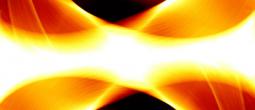

Reaction Plasma System

The purpose of the fusion reactor is to create the conditions necessary for maintaining a self-sustaining fusion reaction. For this to occur, fuel isotopes are heated to create plasma, which is then excited to reach the energy level required for fusion to begin. The plasma must then be maintained at sufficient density to ensure the neutronic particles created by the fusion process impart sufficient energy to the surrounding plasma before escaping the reaction.
System Overview
The plasma system is responsible for the initial creation and excitation of plasma and for the ongoing supply of fuel isotopes once the reaction is underway.
A number of sub-systems initially supply external energy to create the plasma and raise its temperature to reaction levels, while pressure is applied by the magnetic containment field to maintain plasma density. When density and temperature attain levels whereby sufficient energy is retained within the plasma to sustain the reaction, the reaction is said to have reached ignition.
So long as fuel supply, pressure and plasma flow stability are maintained, the reaction will be self-sustaining - no further external energy will be required to maintain temperature.
Plasma Components
Although different isotopes of light elements can be paired to achieve fusion, two hydrogen isotopes - deuterium and tritium - have been identified as the most efficient for fusion devices. The reactor uses this combination.
Deuterium
Deuterium is one of two stable hydrogen isotopes. The nucleus of deuterium contains one proton and one neutron. Deuterium can be distilled from all forms of water and as such is a widely available, harmless, and virtually inexhaustible resource. In every litre of seawater, for example, there are 33 milligrams of deuterium. Deuterium is routinely produced for scientific and industrial applications.
Tritium
Tritium is a fast-decaying radioactive isotope of hydrogen. The nucleus of tritium contains one proton and two neutrons. Tritium occurs only in trace quantities in nature. It can be produced during the fusion reaction using lithium: tritium is produced (or 'bred') when neutrons escaping the plasma interact with lithium contained in breeder modules installed in the reaction isolation shield.
Reaction Ignition
Raising the temperature of fuel isotopes to a point where reaction is initiated has two broad phases:
Plasma Creation
Low-density gaseous fuel is pumped into the reaction chamber where an electrical current is applied which causes the gas to break down electrically (through a process referred to as ohmic heating), become ionized and form a relatively cool plasma (60,000 degrees celsius).
Ohmic Heating
Ohmic heating uses a magnetic field created by the reactor containment system’s central solenoid to induce a high-intensity electrical current into the plasma. This creates electrical resistance within the plasma, increasing plasma particle collisions and resulting in a heating effect. As the temperature of the plasma rises, this resistance—and therefore the heating effect—decreases, limiting this heating technique to early-stage plasma excitation only.
Plasma Excitation
In order to obtain still higher temperatures and reach the fusion ignition, additional heating methods must be applied from outside of the reactor chamber.
Neutral Beam Injection
Neutral beam injection involves shooting high energy particles into the plasma, resulting in collisions with plasma particles which further energise the plasma.
Outside of the reactor chamber, charged deuterium particles are accelerated to the required energy level. These accelerated ions then pass through an ion beam neutralizer which removes their electrical charge. The resulting high velocity neutral particles are then injected into the heart of the plasma where, by way of a series of rapid collisions, they transfer their energy to the plasma particles.
Millions of watts of heating power can be delivered to the plasma using this technique, bringing plasma temperature to the level required for fusion ignition.
Reaction Maintenance
Once plasma has reached reaction ignition temperature, maintaining fuel supply, pressure and plasma flow stability will ensure the reaction remains self-sustaining.
Fuel Cycle
Unlike fission reactors, which contain all of their fuel from the outset, fusion reactors contain only enough fuel (less than 1g gram) to sustain the reaction for a few minutes. This means that new fuel must constantly be introduced, in a way that does not disrupt the reaction itself.
Fuel Injection
High-speed injection of frozen isotopes has proven the most effective means of delivering fuel to the reaction. Combined deuterium-tritium samples are frozen and an extruder punches out millimetre-sized pellets, which are then injected into the reaction chamber by a gas gun at up to 4,000km/h. Their frozen state and the speed of injection prevents the fuel pellets becoming active inside the reaction until they have penetrated deep into the core.
Pellet injection has also proven effective in controlling localised magnetohydrodynamic instabilities. Firing frozen fuel pellets into an area of plasma instability causes a temporary, localised reduction in plasma temperature which can correct temperature variances underlying the instability. The injection system is therefore highly targetable and allows injected pellets to adopt curved trajectories in order to reach specific zones within the plasma.
Plasma Pressure
The pressure to which the plasma is subjected is a balance between the amount of fuel in the reaction chamber and the volume contained by the magnetic containment field (referred to as the Effective Reaction Volume (ERV)). While the volume within the magnetic containment field can be varied, an optimised balance between plasma pressure and the size of the reaction is required for reactor efficiency.
Manipulation of the ERV is therefore a technique typically used only in response to specific engineering scenarios.
Exhaust and Recycling
Exhaust from the reaction, including helium ash (the result of the fusion process) and any escaped hydrogen isotopes is removed by the divertor (located at the bottom of the reactor chamber) and processed through an isotope separation system that extracts fuel isotopes for reinjection into the fuelling cycle.








